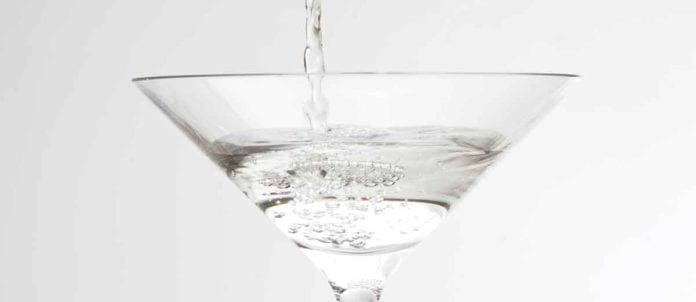Vodka currently dominates the country’s spirit category, according to Statistics Canada. In B.C. and Quebec, it also reigns supreme, while in Ontario, it holds the number-2 position, according to the respective liquor boards. But vodka still offers great potential for bar managers to look for both margin improvement through higher-value cocktails, or upselling to premium brands that continue to gain strength in the market.
HOW IT ALL BEGAN
Smirnoff started the western world’s vodka boom in the 1940s, when Anglo-American entrepreneur John Martin bought out the holder of the Smirnoff patent, who had been struggling to sell his virtually unknown vodka. Smirnoff is now the top-selling brand with more than twice the sales of runner-up, Absolut, at the Liquor Control Board of Ontario (LCBO).
Freddy Diaz is a consultant with Collectif 1806, a group of bartenders from across the U.S. who consult on the spirits and cocktail scene. He says vodka really started taking off through a marketing sleight of hand. “Look into the story of Smirnoff White Whisky,” says Diaz. “This involved putting whisky labels and caps on the vodka.” Martin then added an advertising slogan that doesn’t sound very exciting at all: “Smirnoff White Whisky — No Smell, No Taste.” But it worked, and soon Americans were mixing the vodka with everything. Diaz says the next jump was the Moscow Mule (vodka and ginger beer served in a copper cup), the first “big” vodka cocktail in the 1940s, created by Martin and his bar-owner friend Jack Morgan. Since then, the number of vodka cocktails has exploded, and even venerable old cocktails such as the gimlet and martini, which traditionally used gin, are now often made with vodka.
“Vodka is a great gateway to cocktails,” says Gord Hannah, head bartender at Toronto’s Drake Hotel, which operates several bars and restaurants and sees long line-ups for its clubby weekend events. He says that while younger people rarely like gin or whisky on their first taste, most feel comfortable with vodka and are happy to try new vodka-based cocktails. “So I say, take advantage of that openness and introduce them to new flavours like vermouth, amaro or bitters,” says Hannah.
The clientele at the Drake skews high end, but, says Hannah, “vodka-and-soda is our top-selling drink.” Hannah also says branding and marketing is more important for vodka, as that’s often what drives customer choices. At the super-premium/deluxe end, the Drake’s top sellers are Ketel One, Grey Goose and Belvedere, but “Tito’s Handmade, from Texas, is gaining popularity,” says Hannah. “It’s the ‘new’ vodka. Another one that’s growing — and interestingly without any marketing at all — is Absolut Elix.” The high-end entry from Swedish producer Absolut is a “secret trend” according to Hannah, and at around $44 retail, it’s right up there in price.
According to Keeley Rogers, media relations coordinator for the LCBO, vodka sales as a whole have been stable over the last few years, but “consumers are trading up. Super-premium vodka saw the most significant growth at 35 per cent in fiscal 2014/15. It is the only vodka category to see double-digit growth over the last five years.” With its slick marketing campaigns and glamorous image, customers understand that premium brands cost more, but they are increasingly willing to pay.
Trevor Kallies, beverage director for the Donnelly Group, which operates 17 bars and restaurants in Vancouver, advises taking advantage of brand awareness. “People still call out for their brand, but can be open to suggestion and the bartender can have a lot of influence. It’s a good opportunity to upsell.” Currently, in Vancouver, Absolut is a brand leader on the bar scene.
Kallies adds that new and revived vodka cocktails should appear on drinks lists regularly, and that it’s time to pare down or dump the “martini menu” with its litany of flavours. He says the classic martini (vodka or gin, vermouth, lemon or olive) is making a big comeback. In the group’s livelier bars, he says “vodka-and-soda rules, especially with the weekend party crowd.”
FLAVOURED VODKAS
According to LCBO’s Rogers, flavoured vodka sales have “normalized” since the confectionary flavour boom of a few years ago. The recent introduction of Ciroc, which performed exceptionally well with its flavoured products, offset some of the general declines in the larger flavoured vodka subset in Ontario. Rogers says customers are returning to core flavours and brands, a trend bartenders are also noticing — and are pleased about. “I can make you a better, fresher lemon or raspberry vodka, so why order a pre-flavoured in a bar?” says Hannah.
In Vancouver, flavoured vodkas remain popular and Kallies is seeing traction from newer flavours such as cilantro and grape. Regarding another popular vodka variation, Kallies says he doesn’t even stock vodka coolers. “They’re more retail, for home consumption, and they’re big with the younger, clubby demographic. If someone asks for a vodka cooler, I’m going to ID them.” At the Drake, Hannah feels the same about Smirnoff Ice, which remains a top-seller, but he suggests steering customers to better, fresher in-house options, such as a Vodka Collins.
With its position as the number-1 spirit in bars, classic vodka cocktails such as martinis, Bloody Caesars, Bloody Marys and — yes, still — Cosmopolitans, will sell themselves, but, says Hannah, “make sure you have at least one new vodka cocktail on the menu and make it challenging. Introduce people to new flavours and ingredients.
Next time they may try other cocktails with some of those ingredients. Not only is this good for customer experience, your profit margin will be higher.”
Issue 48, Volume 8
Written By: Alan McGinty


















